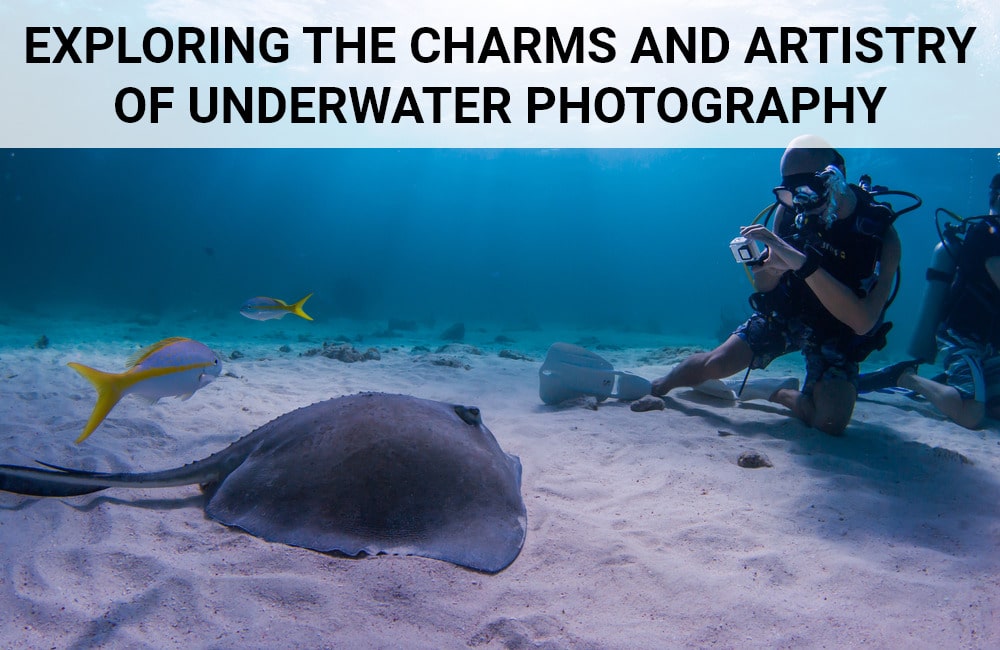Underwater photography is the art of taking photographs underwater. It is a challenging and rewarding hobby that people of all ages can enjoy. Underwater photographers use various specialized equipment, including underwater cameras, housings, and lighting.
Underwater photography is alluring because it allows photographers to capture the beauty of the underwater world. From coral reefs to shipwrecks, underwater photographers have endless opportunities to capture stunning images.
Underwater photography is not just about taking pictures of fish and coral reefs. It is also about capturing the artistic aspects of underwater scenes. This can be done by using creative composition, lighting, and color.
Scuba tanks are essential for extended underwater photography sessions. They provide photographers with the air they need to breathe and the buoyancy they need to move around underwater.
Without scuba tanks, underwater photographers would be limited to short snorkeling sessions. This would make it challenging to capture the beauty of the underwater world in detail.
Equipment and Preparation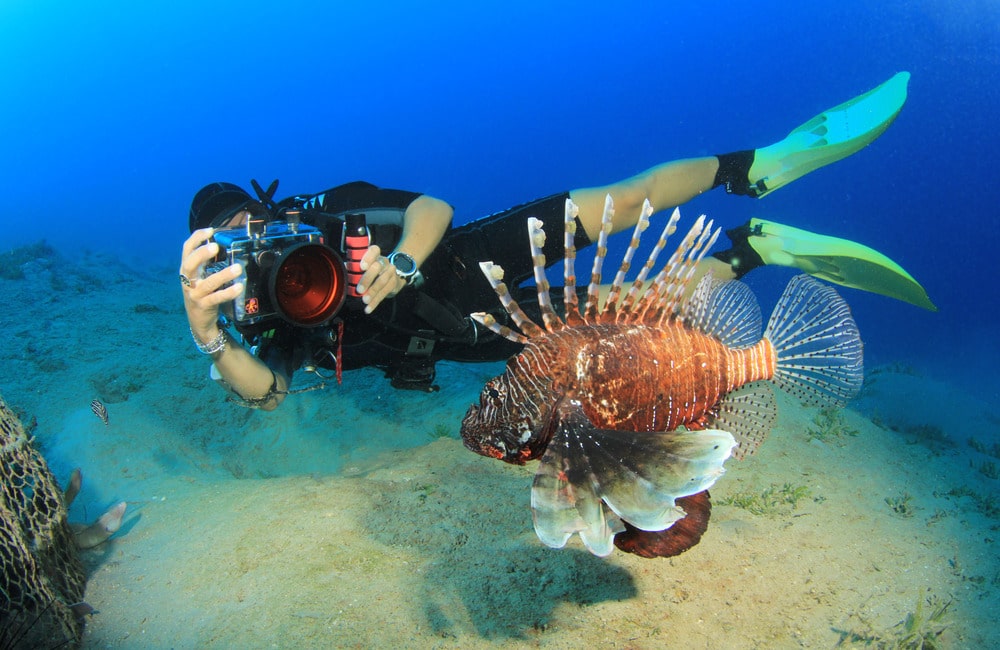
Underwater photography is a challenging but rewarding hobby. It requires specialized equipment, including a camera, waterproof housing, and lighting.
Camera: A DSLR or mirrorless camera is the best choice for underwater photography. These cameras offer the best image quality and performance.
Waterproof housing: Waterproof housing is essential for protecting your camera from water damage. Housings come in various sizes and styles, so choosing one that fits your camera and needs is essential.
Lighting: Underwater lighting is essential for creating stunning images. Various underwater lights are available, including strobes, continuous lights, and video lights.
Scuba tanks are a crucial component for underwater photographers. They allow photographers to stay underwater for extended periods, which is necessary for capturing stunning images.
When selecting equipment for underwater photography, it’s essential to consider the following factors:
Budget: Underwater photography equipment can be expensive, so it’s important to set a budget before shopping.
Experience level: If you’re a beginner, you may want to start with a less expensive camera and housing. As you gain experience, you can upgrade to more expensive equipment.
Type of photography: If you plan on doing a lot of macro photography, you’ll need a camera with a macro lens. If you plan on doing a lot of wide-angle photography, you’ll need a camera with a wide-angle lens.
When selecting scuba tanks, it’s vital and advisable to consider the following factors:
Capacity: The capacity of the tank determines how long you can stay underwater.
Weight: The tank’s weight will affect how easy it is to carry and maneuver underwater.
Regulator: The regulator is the device that allows you to breathe air from the tank. It’s important to choose a regulator that is comfortable to use, and that provides good airflow.
With the right equipment, you can capture stunning underwater images that amaze your friends and family.
Techniques for Underwater Photography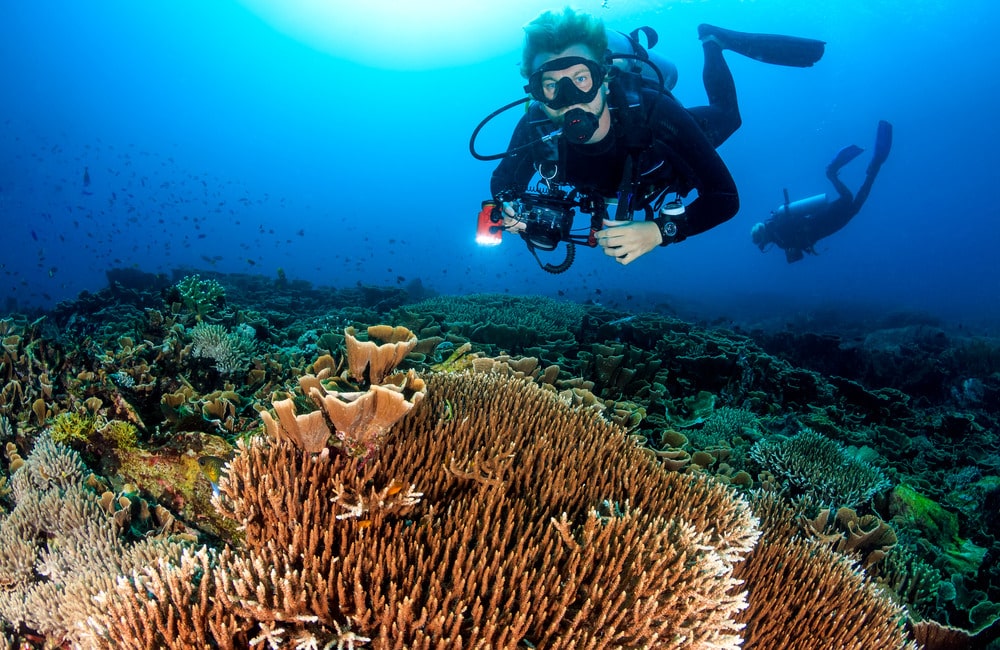
Underwater photography is a challenging but rewarding hobby. It requires specialized equipment and techniques to capture stunning images.
Some of the unique challenges of underwater photography include:
Limited visibility: Visibility underwater is often limited due to water clarity, sediment, and algae. This can make it difficult to frame shots and focus on subjects.
Water refraction: Water refracts light, distorting images and making it difficult to get accurate colors. This can be corrected using a unique lens or adjusting your camera’s settings.
Weight: Underwater housings and equipment can be heavy, making it challenging to maneuver underwater. This can be mitigated by using a buoyancy compensator (BCD) and fins.
Underwater lighting is essential for creating stunning images. Various underwater lights are available, including strobes, continuous lights, and video lights. The type of light you use will depend on the type of photography you are doing and the environment you are shooting in.
Colors underwater can be very different from colors above water. This is due to the way that water absorbs light. You will need to use a special underwater white balance setting on your camera to get accurate colors. You may also need to use a color filter on your lens.
Composition is just as important in underwater photography as in any other type of photography. When composing your shots, consider the limited visibility, the water refraction, and underwater colors.
Scuba tanks allow underwater photographers to stay underwater for extended periods. This allows them to capture stunning images. Scuba tanks also allow underwater photographers to carry more equipment, such as lights and cameras. This gives them more creative freedom when composing their shots.
Locations and Subjects for Underwater Photography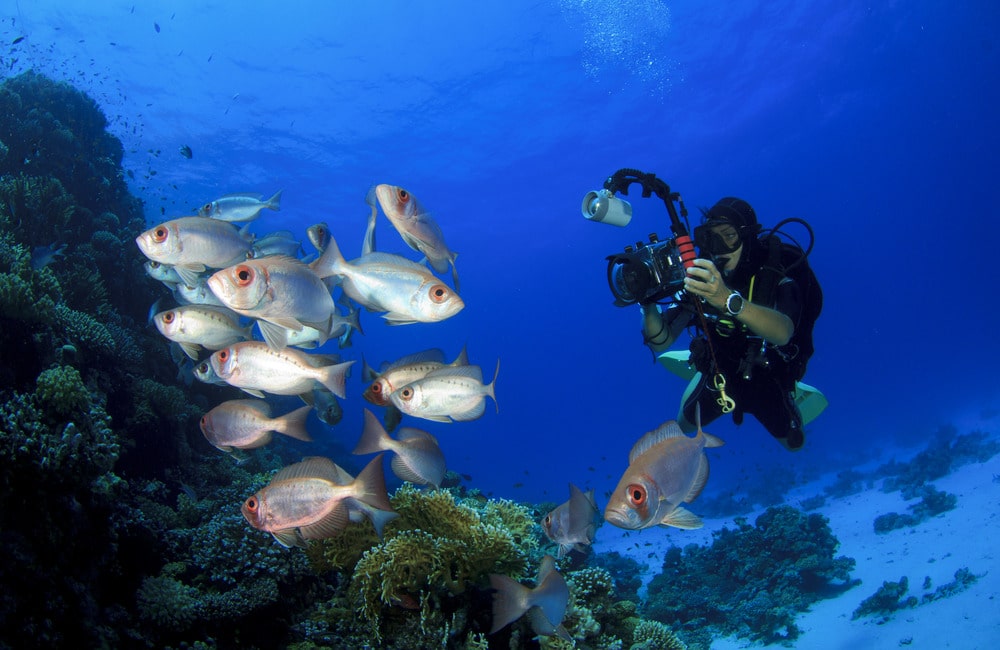
Some ideal locations for underwater photography include:
Coral reefs: Coral reefs are home to a wide variety of marine life, making them a great place to capture stunning underwater images.
Shipwrecks: Shipwrecks are often covered in marine growth, making them a popular subject for underwater photographers.
Marine sanctuaries: Marine sanctuaries are protected areas where marine life is abundant. These areas are great for underwater photographers who want to capture images of marine life in their natural habitat.
When selecting subjects and themes for underwater photography, it is important to consider the following factors:
The environment: The environment you are shooting in will determine the type of subjects and themes you can capture. For example, if you are shooting in a coral reef, you will likely want to capture images of the coral and the fish that live there.
The time of day: The time of day can also affect the type of images you can capture. For example, early morning and late afternoon are often the best times to shoot underwater, as the light is softer and more diffused.
The weather: The weather can also affect the type of images you can capture. For example, if it is cloudy or raining, the visibility underwater will be reduced, which will make it more difficult to capture clear images.
Scuba tanks are essential for underwater photography, as they allow photographers to explore deeper depths and capture longer exposures.
Deeper depths offer more opportunities for stunning underwater photography, as there is more marine life and the water is clearer. However, deeper depths also require more specialized equipment, such as scuba tanks and lights.
Longer exposures can be used to capture images of subjects that are moving quickly, such as fish. However, longer exposures require a tripod and a steady hand.
With the help of scuba tanks, underwater photographers can capture stunning images that would not be possible without them.
Artistry and Expression
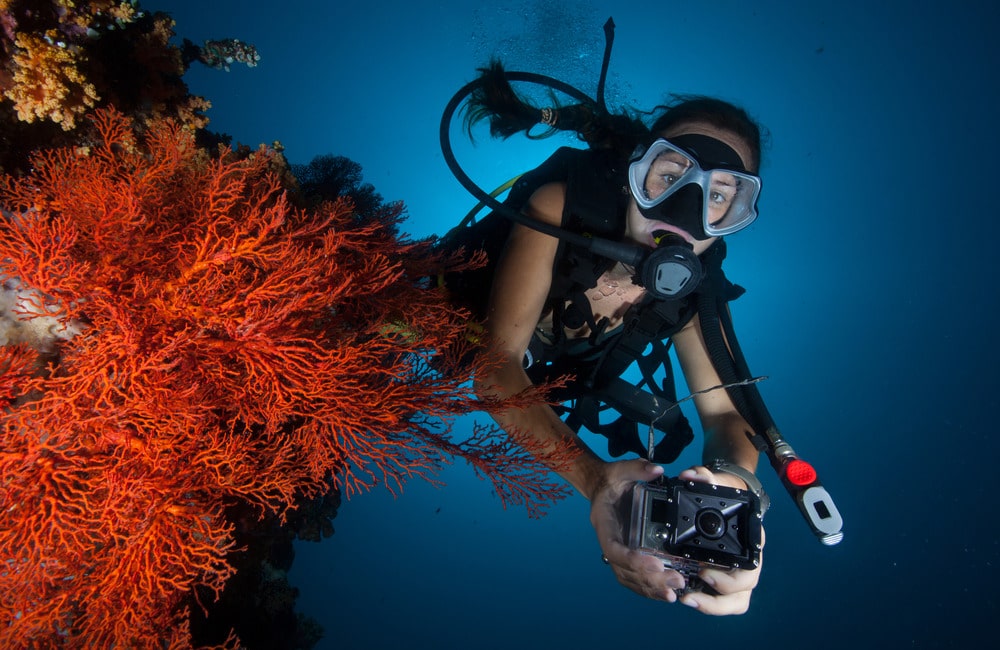
Underwater photography is a unique and challenging form of photography that can be used to express a wide range of emotions and ideas. The underwater environment provides a unique perspective on the world, and underwater photographers can use this to create stunning and evocative images.
Underwater photography is a creative medium, and underwater photographers have the freedom to express their own personal style and creativity in their work. This can be done through the use of lighting, composition, and subject matter.
Underwater photographers can use their images to convey a wide range of emotions, such as wonder, awe, and beauty. They can also use their images to tell stories about the underwater world and the creatures that live there.
Environmental Conservation and Ethical Guidelines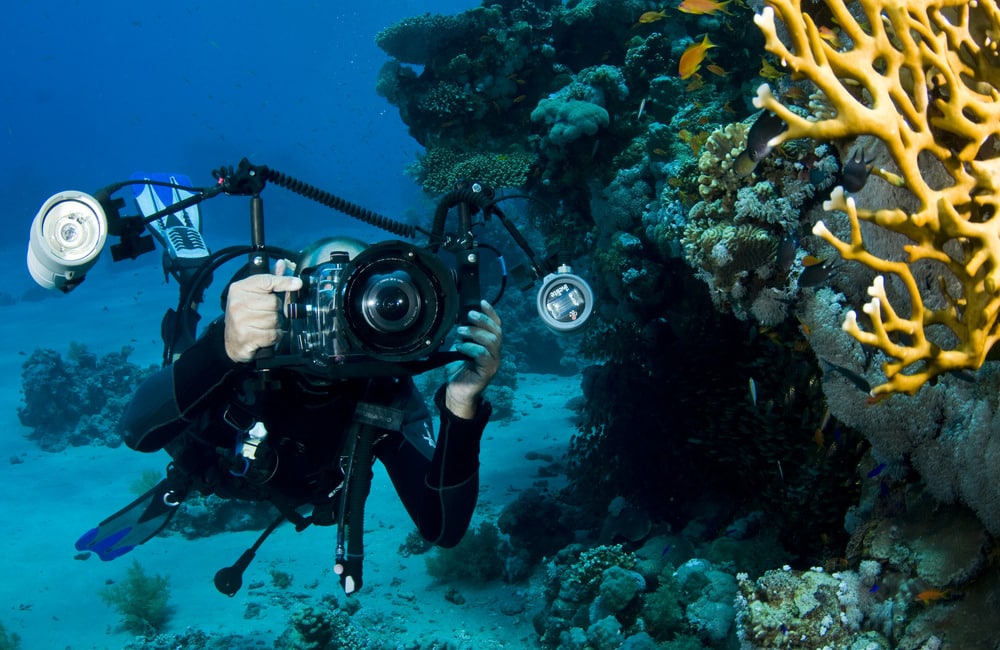
Underwater photography is a great way to document the beauty and diversity of the underwater world. However, it is important to remember that the underwater world is fragile and that our actions can significantly impact it.
That’s why underwater photographers need to practice environmental conservation. This means following ethical guidelines that minimize our impact on the underwater environment.
Here are some of the most important ethical guidelines for underwater photographers:
Protect coral reefs: Coral reefs are important ecosystems that are under threat from climate change, pollution, and overfishing. It’s important to avoid touching coral reefs and to not anchor your boat on them.
Dispose of waste properly: Anything that you bring underwater, you should also take back with you. This includes trash, sunscreen, and food scraps.
Underwater photography can be a powerful tool for environmental conservation. By following ethical guidelines and advocating for responsible underwater photography practices, we can help protect the underwater world and the living creatures.
Here are some ways that you can advocate for responsible underwater photography practices:
Educate others about the importance of environmental conservation. Talk to your friends, family, and fellow divers about the importance of following ethical guidelines and practicing responsible underwater photography.
Support organizations that are working to protect the underwater world. Many organizations are working to protect the underwater world. You can support these organizations by donating money, volunteering your time, or spreading the word about their work.
By following these guidelines, we can help to ensure that the underwater world is preserved for future generations.
Conclusion
In conclusion, underwater photography is a fascinating and fulfilling hobby that allows photographers to explore the beauty of the underwater world. By using specialized equipment, mastering techniques, and selecting appropriate locations and subjects, photographers can capture stunning images that evoke a range of emotions and convey powerful messages.
However, it is crucial to remember the fragility of the underwater environment and the need for responsible practices. Through environmental conservation and adherence to ethical guidelines, underwater photographers can play a vital role in preserving and advocating for the underwater world, ensuring its protection for future generations. By embracing these principles, we can continue celebrating the wonders of the underwater world through our art while promoting sustainability and awareness.
